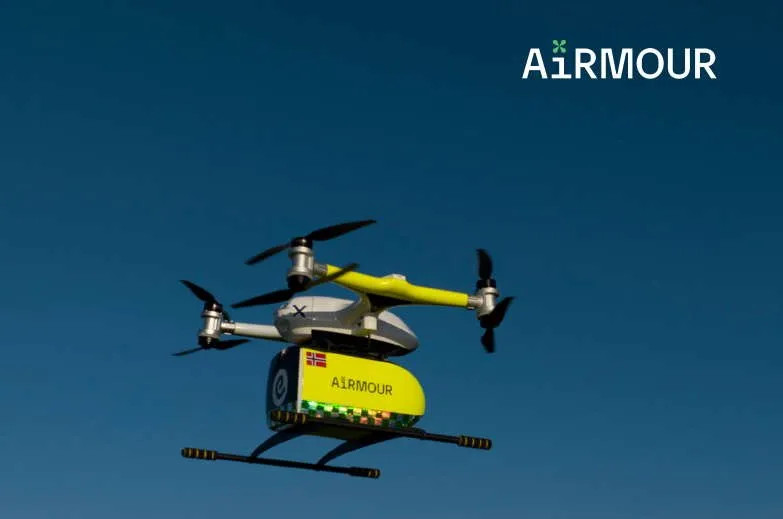
European drone research and promotion organization AiRMOUR has released the results of its large opinion survey of sector stakeholders and members of the public on attitudes toward use of UAVs in different activities – particularly in response to medical emergencies. While not necessarily surprising, the findings bode well for increased acceptance of the craft operating in European Union skies in future.
The survey involved 1,100 people in Finland, Sweden, Norway, Germany, Luxembourg, and the Netherlands – the largest poll of its kind since the last European Union Aviation Safety Agency study in 2021. In keeping with AiRMOUR’s particular focus on deployment of drones for medical and emergency responder purposes, the inquiry took interest in acceptance of UAVs deployed in those capacities compared to the wider array of potential commercial and use cases.
Perhaps not surprisingly, AiRMOUR found that both people involved in drone activities as well as members of the public were generally more amendable to the craft being used in medical emergencies – rushing defibrillators to heart attack victims, for example – than in non-urgent missions, including delivery of medicines.
About 80% of respondents voiced some degree of acceptance of the first scenario, with that level dropping to 50% in non-medical deliveries. When the craft in questions were larger variants of drones like passenger-carrying electric vertical takeoff and landing vehicles, acceptance decreased to about 71% and 32% respectively.
Read: AiRMOUR tests drones in medical emergency supplies, personnel transport
When the AiRMOUR poll repositioned deployment of drones in health emergency situations within the wider range of probable use cases, “Medical deliveries, e.g. of blood samples” received just over 65% acceptance, well above the 43% for “Personal deliveries.” The highest mission categories were for infrastructure maintenance, land or building surveys, environmental protection, and security surveillance.

“The reason for these findings could be because drones used for medical emergencies, or for maintenance, surveying or monitoring are considered less disturbing than for other uses, as they are generally not very frequent, often operating in controlled or isolated environments,” explained Lucy Mascarenhas from the LuxMobility consultancy that led the AIRMOUR survey.
Another major conclusion of the study is perhaps the most intuitive: People with greater exposure to or familiarity with UAVs and other forms of urban air mobility (UAM) voiced greater levels of acceptance to a wider range of use cases.
Given the rising use of drones in commercial, security, emergency, and public service operation, therefore, the AiRMOUR survey anticipates a corresponding increase in public approval of aerial activities as time goes on.
“Both public and stakeholders with more knowledge on UAM were more accepting of the use cases and had a lower level of concern and increased level of comfort in the technology,” analysis of the AiRMOUR drone poll said, noting the higher support of emergency medical service (EMS) deployment in particular. “The youngest respondents were more knowledgeable on the topic of UAM and were less concerned about security than older participants. Also, differences were apparent between countries…The EMS use cases had a very high level of acceptability overall, including all the use cases being explored as part of the AiRMOUR study.”
FTC: We use income earning auto affiliate links. More.



Comments